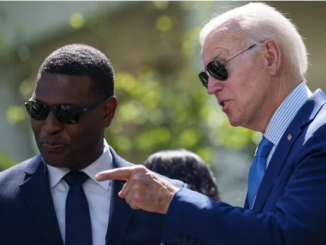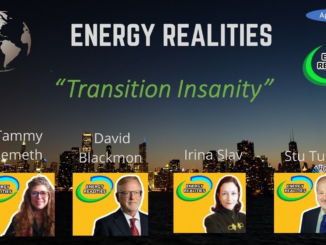
ENB Pub Note: We highly recommend subscribing to David’s Substack. This article brings up some great points about the wind industry.
President Donald Trump caught European Union President Ursula Von Der Leyen by surprise during a press event announcing the US/EU trade agreement Monday when he launched into a 3-minute diatribe targeting the wind industry. Von Der Leyen, a longtime German government official who held a senior position in the Angela Merkel government during its heavy expansion of that country’s vaunted Energiewende experiment, was visibly discomfited as Trump slammed the form of intermittent generation she has done so much to promote throughout her career.
Referring to the industry as “a con job,” Trump said, “It’s very expensive. And in all fairness, Germany tried it, and wind doesn’t work,” as Von Der Leyen’s polite smile faded to a stern frown. But Trump was far from finished.
“You need subsidy for wind. And energy should not need subsidy,” the US President continued in the unique Queens dialect he’s retained since childhood, adding, “It’s the most expensive form of energy. It is no good. They’re made in China, almost all of them.”
For a European for whom English is a second language, Trump’s direct and often shorthand way of expressing his thoughts had to have been thoroughly confusing to the EU President, but the message was clear: On energy and the fading drive to the net-zero fantasy with which the EU and UK remain obsessed, Trump and America are moving in the opposite direction.
Trump and the Republican majorities in congress, through a combination of executive orders, aggressive administrative moves, and language to eliminate Biden-era tax breaks and subsidies for wind and solar in the One Big Beautiful Bill Act (OBBBA) have already essentially ended former president Joe Biden’s dreams of a vibrant offshore wind sector. Without those tax incentives and subsidies, the business plans for those massive projects are unsustainable and the sector is now seeing a flood of big companies like BP, Shell, Equinor, Orsted, and others cancelling projects and taking massive write-downs on their virtue-signaling investments.
The news for onshore wind projects is less terrible, but only marginally so. A new study published by business advisory giant FTI Consulting finds that at least 320 onshore projects with a total nameplate capacity of more than 100 GW are “no longer economically viable” in the wake of the OBBBA’s enactment. The authors go onto say that the new law will make it “significantly harder, if not impossible, to attract capital and meet key development milestones,” signaling the likelihood of a wave of capital flight out of the industry I wrote about in early July.
Trump’s critics like to claim the President’s anti-wind power stance is driven by large contributions by the “fossil fuels” industries and an irrational thought process. But the truth is that the President was a critic of the wind industry and Germany’s Energiewende endeavors long before he dreamed of running for president. Trump’s disapproval of weather-dependent forms of energy have grown out of his observations of the de-industrializing impacts they have had in Germany beginning 20-25 years ago, and, more recently, in the UK.
Trump understands that, despite claims wind is among the cheapest form of power generation, the reality is that electricity costs rise rapidly everywhere it becomes a significant part of an integrated grid. The higher power costs drive all forms of industrial operations to relocate where power is cheaper, and as often as not, that road leads to China.
The UK has the highest cost of industrial power on earth today, and Germany isn’t far behind. Trump is perhaps a rare form of political figure who is able to connect the cause of this problem with its inevitable effect.
After watching first the Obama administration and more recently Biden’s appointees and handlers strive to take America down this same road to economic ruin, Trump is determined to not just save what remains of American industrial might after 40 years of globalism, but to rebuild it. He understands that the most effective way to drive that shift is to reverse the energy and climate policy regimes of both prior Democratic administrations.
These are thought processes which are completely foreign to a central planner like Ms. Von Der Leyen, which helps to explain her deer-in-the-headlights reaction to Trump’s diatribe about her favored wind industry.
Is Oil & Gas Right for Your Portfolio?
Crude Oil, LNG, Jet Fuel price quote
ENB Top News
ENB
Energy Dashboard
ENB Podcast
ENB Substack





